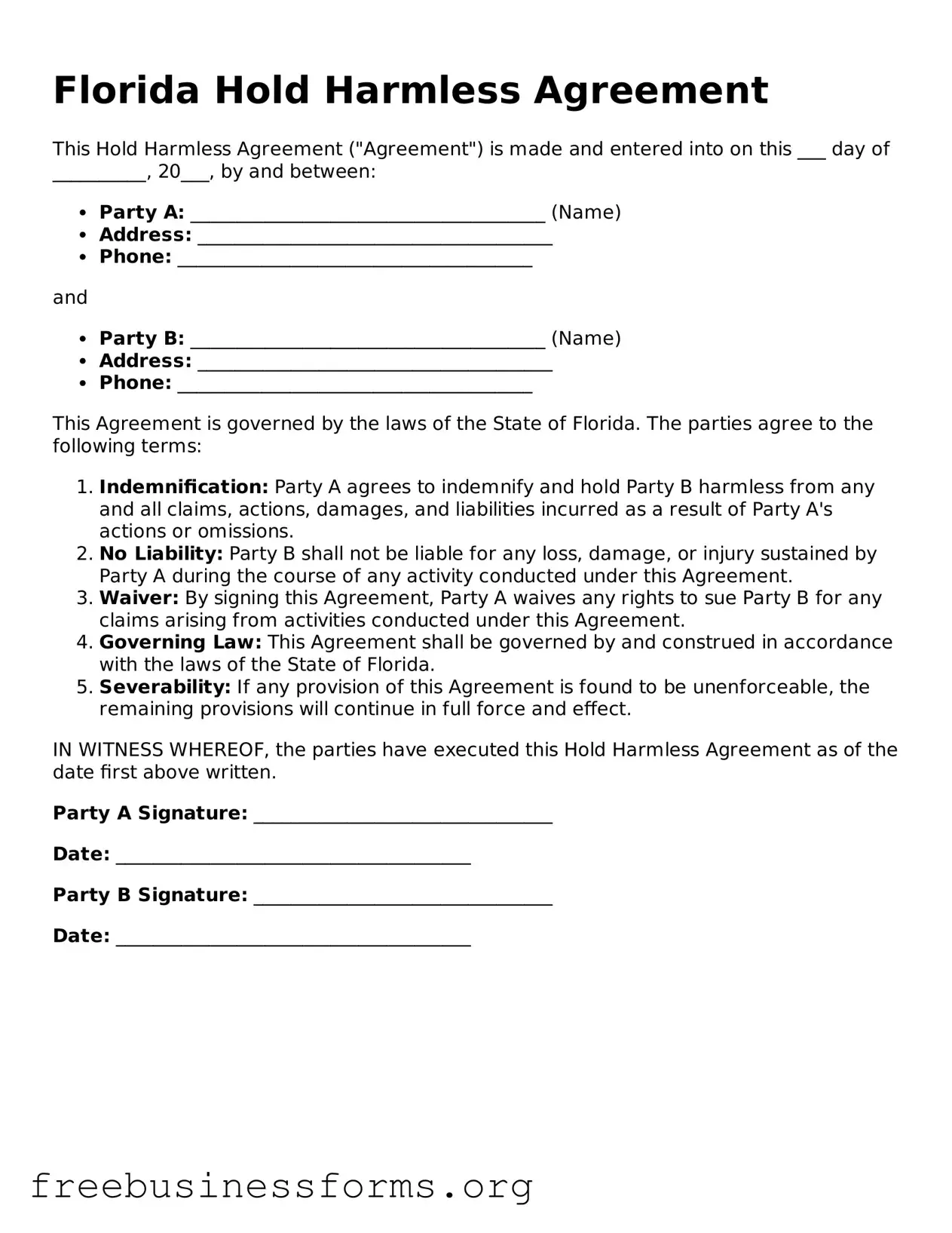Florida Hold Harmless Agreement
This Hold Harmless Agreement ("Agreement") is made and entered into on this ___ day of __________, 20___, by and between:
- Party A: ______________________________________ (Name)
- Address: ______________________________________
- Phone: ______________________________________
and
- Party B: ______________________________________ (Name)
- Address: ______________________________________
- Phone: ______________________________________
This Agreement is governed by the laws of the State of Florida. The parties agree to the following terms:
- Indemnification: Party A agrees to indemnify and hold Party B harmless from any and all claims, actions, damages, and liabilities incurred as a result of Party A's actions or omissions.
- No Liability: Party B shall not be liable for any loss, damage, or injury sustained by Party A during the course of any activity conducted under this Agreement.
- Waiver: By signing this Agreement, Party A waives any rights to sue Party B for any claims arising from activities conducted under this Agreement.
- Governing Law: This Agreement shall be governed by and construed in accordance with the laws of the State of Florida.
- Severability: If any provision of this Agreement is found to be unenforceable, the remaining provisions will continue in full force and effect.
IN WITNESS WHEREOF, the parties have executed this Hold Harmless Agreement as of the date first above written.
Party A Signature: ________________________________
Date: ______________________________________
Party B Signature: ________________________________
Date: ______________________________________
